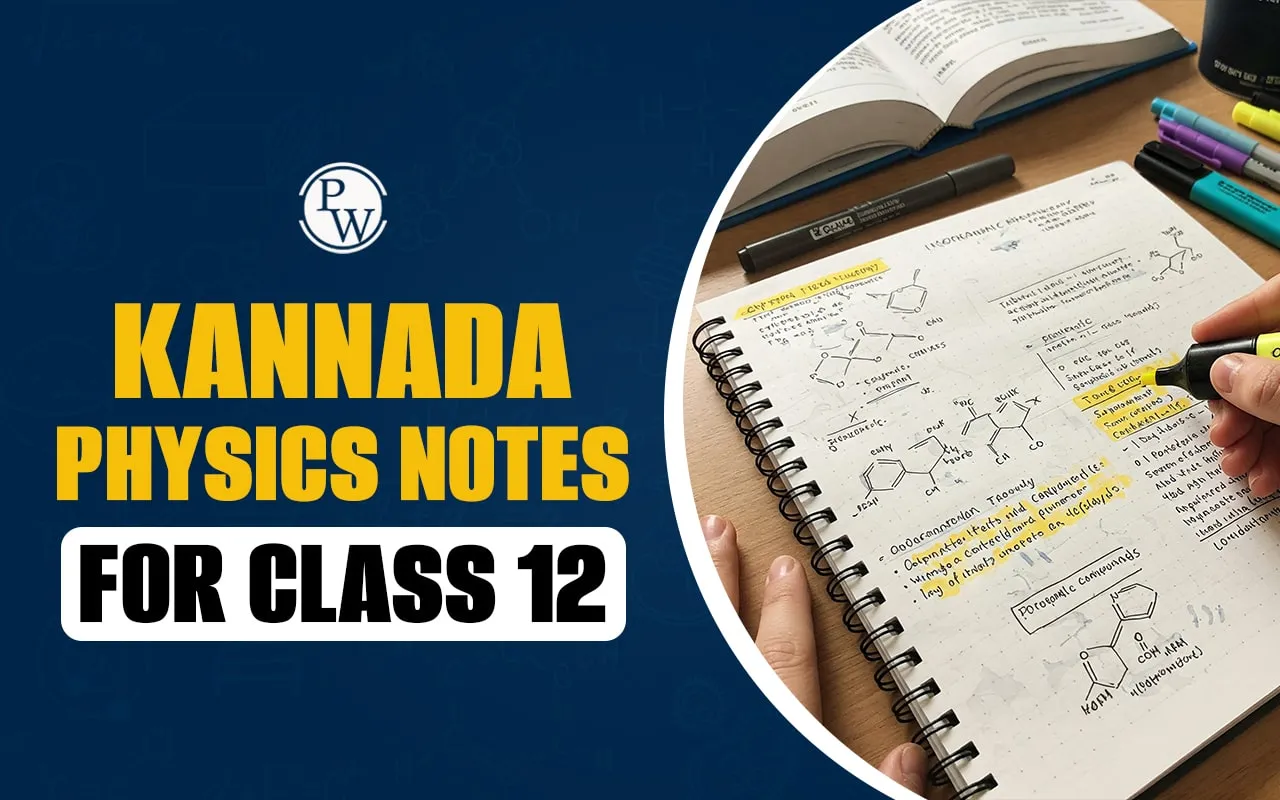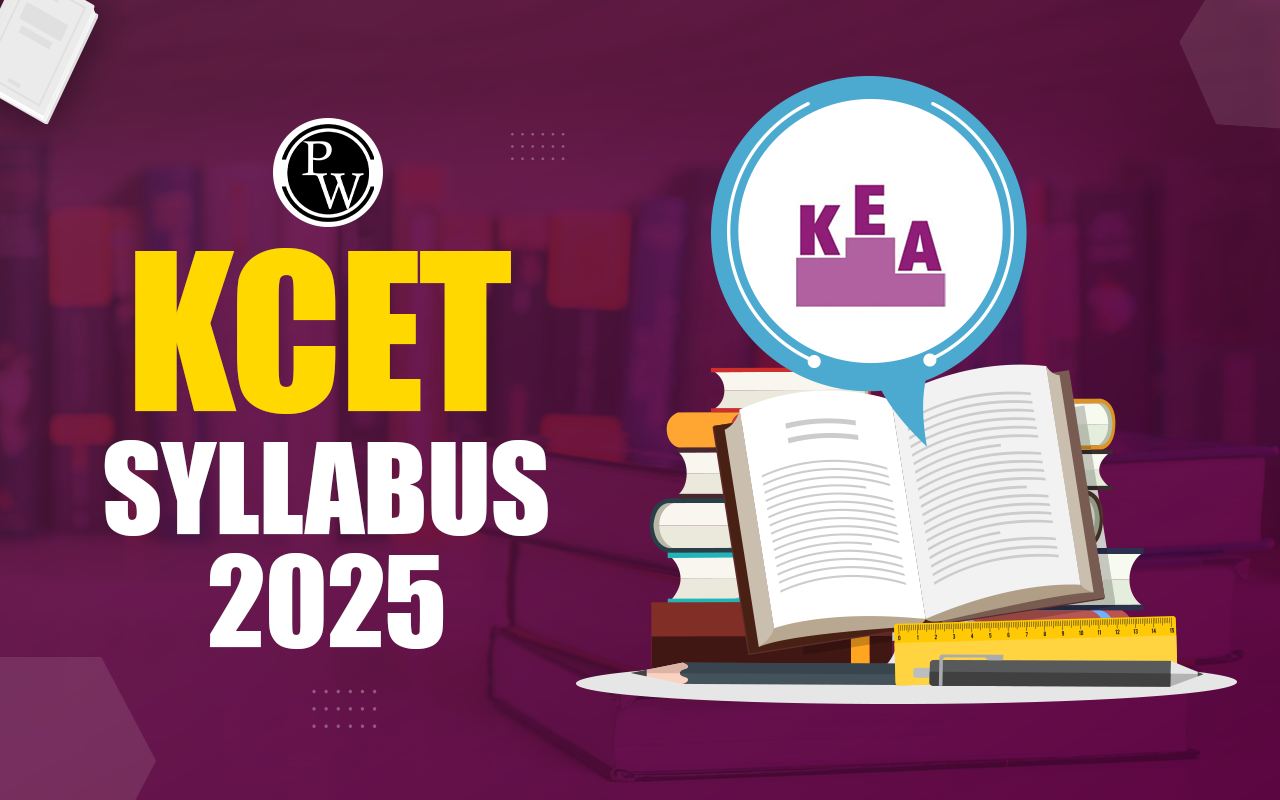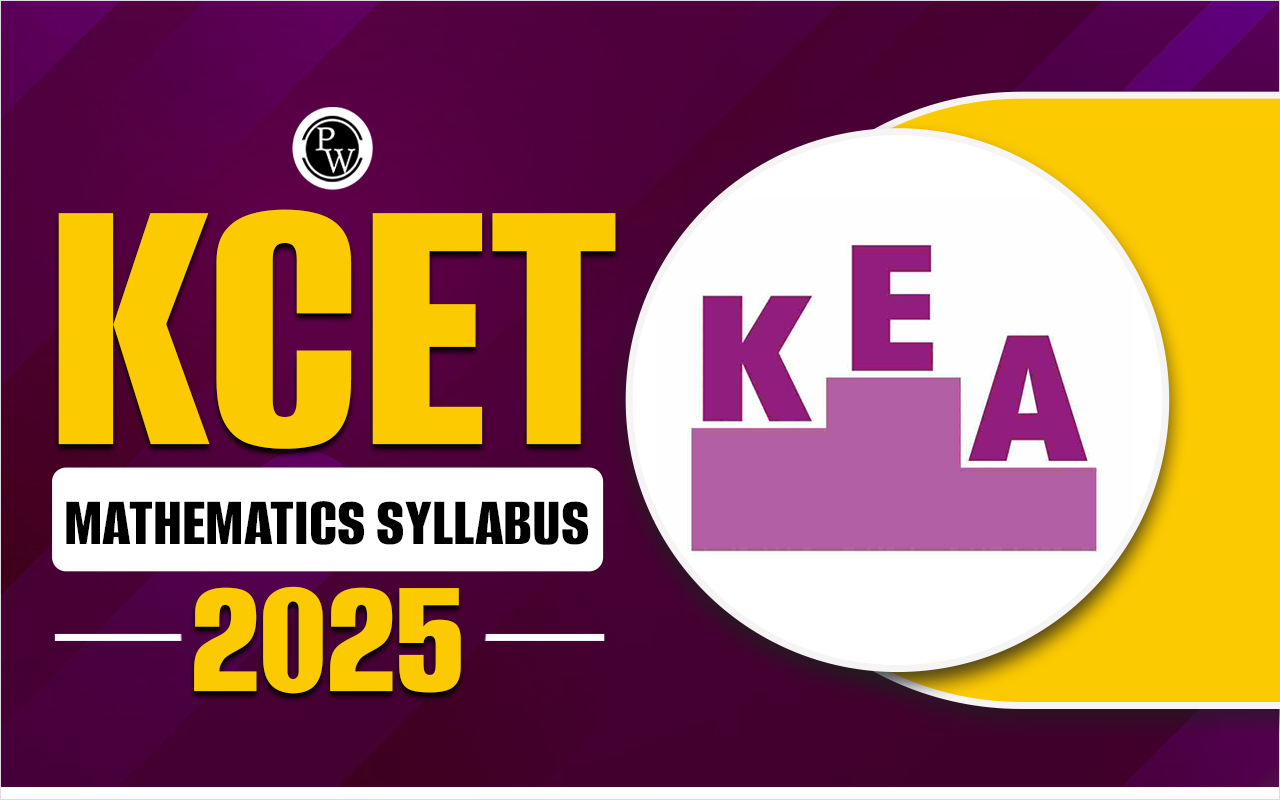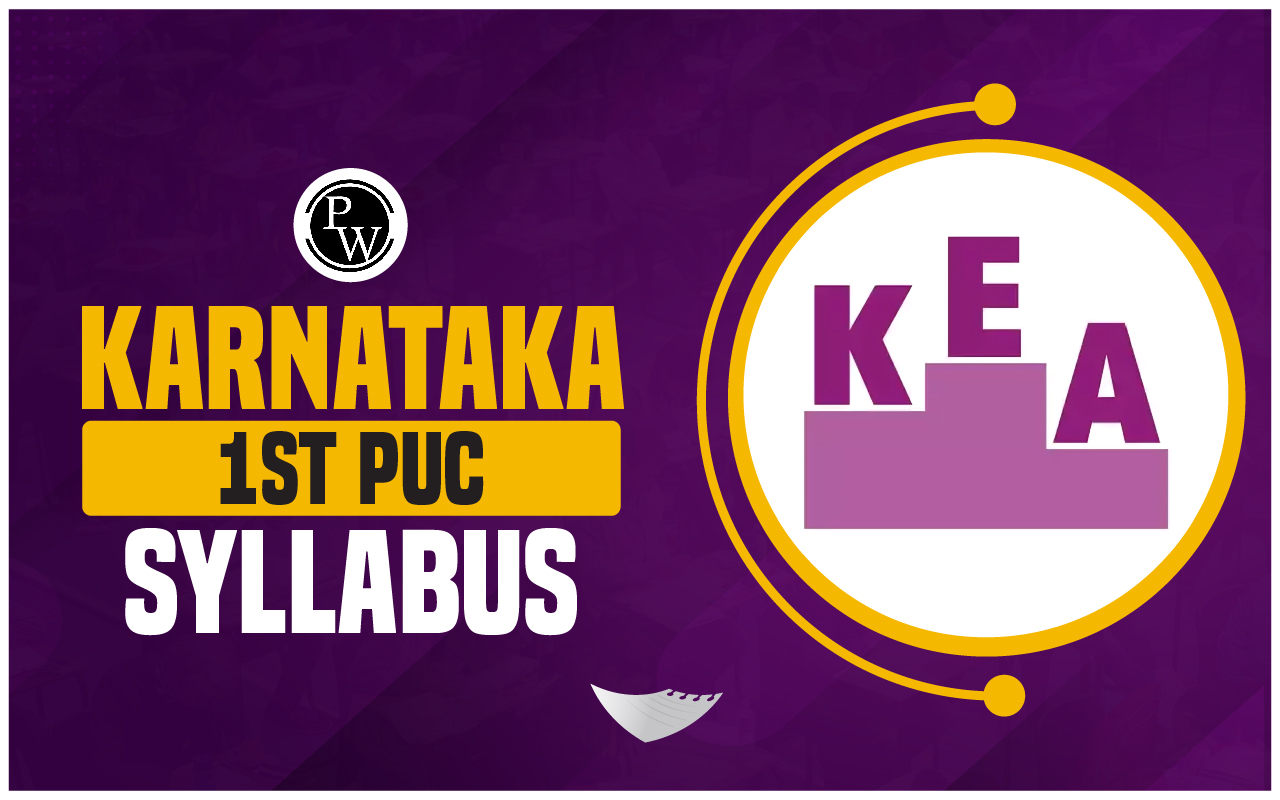
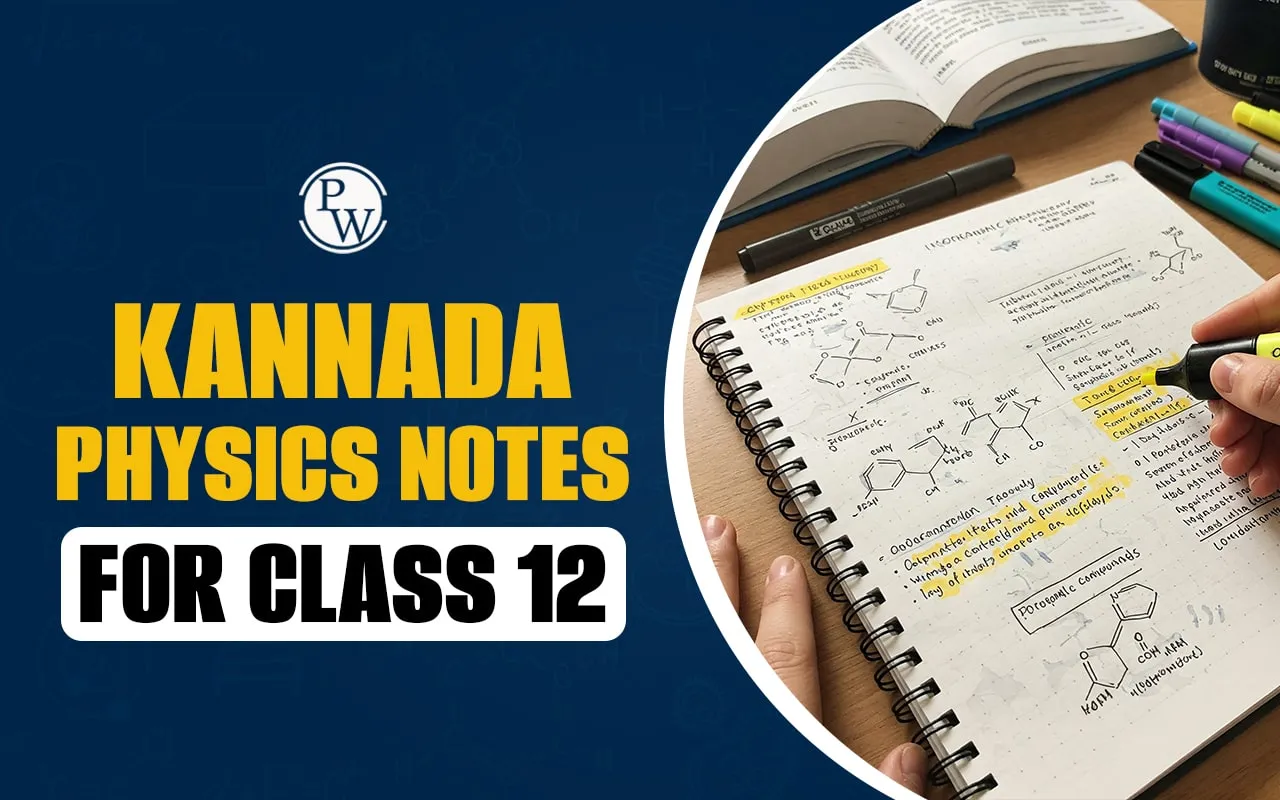
Kannada Physics Notes for Class 12: Class 12 Kannada Physics Notes offer a comprehensive overview of the syllabus aligned with the Karnataka PUC Board. These notes cover key topics like Mechanics, Thermodynamics, Electromagnetism, and Modern Physics in simple Kannada for better understanding.
They are designed to help students grasp core concepts, revise quickly, and perform well in the exam. The notes also highlight the exam pattern, marking scheme, and important question types. Solving previous year papers using these notes helps students identify trends and focus on frequently asked topics, boosting confidence and accuracy in the board exams. Ideal for last-minute preparation and conceptual clarity.
Kannada Physics Notes for Class 12
Here we have provided the Kannada Physics Notes for Class 12, designed to help students understand key concepts easily and prepare effectively for board exams. These notes follow the latest syllabus and exam pattern. They are useful for revision, concept clarity, and solving previous year papers. Below is the table with topic-wise downloadable PDF links.
|
Kannada Physics Notes for Class 12 |
|
|
Topic |
|
|
Electric Charges and Fields |
|
|
Electrostatics and Potential |
|
|
Current Electricity |
|
|
Moving Charges and Magnetism |
|
|
Magnetism and Matter |
|
|
Electromagnetic Induction |
|
|
Alternating Current |
|
|
Electromagnetic Waves |
|
|
Ray Optics and Optical Instruments |
|
|
Wave Optics |
|
|
Dual Nature of Radiation and Matter |
|
|
Atoms |
|
|
Nuclei |
|
|
Semiconductor Electronics |
|
KCET Rank Wise College List 2025
Detailed Overview of Kannada Physics Notes for Class 12
Here is a detailed overview of Kannada Physics Notes for Class 12:
1. Electric Charges and Fields
This note introduces fundamental concepts like charge, Coulomb's law, and electric field lines. It explains basic laws of electrostatics in Kannada with illustrative examples and diagrams, making it easy to grasp.
2. Electrostatics and Potential
Focuses on electric potential, potential energy, and equipotential surfaces. It builds on charge concepts and prepares students for numericals in capacitor-related topics.
3. Current Electricity
Explains Ohm’s law, resistivity, series and parallel circuits, and Kirchhoff’s rules. Helpful for mastering circuit-based problems and internal assessments.
4. Moving Charges and Magnetism
Covers magnetic effects of current, Biot–Savart law, and Ampere’s law. Diagrams and Kannada explanations help in understanding field patterns and forces.
5. Magnetism and Matter
Discusses earth’s magnetism, magnetic materials, and hysteresis. Conceptual focus makes it ideal for both theory questions and objective-type queries.
6. Electromagnetic Induction
Key concepts like Faraday’s laws, Lenz’s law, and induced EMF are covered. This note simplifies flux change and its consequences with examples.
7. Alternating Current
Explains AC circuits, RMS values, and resonance. Includes solved examples on LCR circuits and phasor diagrams, useful for board-level problems.
8. Electromagnetic Waves
Details characteristics of EM waves, spectrum classification, and wave equations. Helpful for understanding wave behavior in communication systems.
9. Ray Optics and Optical Instruments
Explains reflection, refraction, lenses, and human eye structure. Diagrams make it easy to learn image formation and optical devices.
10. Wave Optics
Focuses on interference, diffraction, and polarization. Helps students with derivations and understanding wave nature of light.
11. Dual Nature of Radiation and Matter
Covers photoelectric effect, electron emission, and de Broglie wavelength. Important for conceptual clarity in modern physics.
12. Atoms
Describes atomic models, spectral lines, and hydrogen atom structure. Focused and clear, this note supports visualization of atomic behavior.
13. Nuclei
Explains nucleus structure, radioactivity, and nuclear reactions. Kannada explanations help retain key formulas and decay laws.
14. Semiconductor Electronics
Covers diodes, transistors, logic gates, and communication systems. Essential for scoring in application-based and conceptual questions.
Benefits of Using Kannada Physics Notes for Class 12
Below, we have provided the benefits of Kannada Physics Notes for Class 12 -
Language Comfort for Better Understanding
Explains complex physics concepts in simple Kannada, making it easier for native-language students to grasp and retain topics.
Aligned with Karnataka PUC Syllabus
Follows the exact syllabus and blueprint prescribed by the Karnataka board, ensuring that no topic is missed during preparation.
Covers Exam Pattern & Marking Scheme
Highlights question weightage, important chapters, and frequently asked problems based on previous year trends.
Supports Conceptual Clarity
Each note is focused on building strong fundamentals, which helps students solve both theoretical and numerical questions confidently.
Time-Saving for Revisions
Short notes format allows quick revisions before exams, making it ideal for last-minute preparation.
Access to Topic-wise PDFs
Easy-to-download PDFs allow offline access, letting students study anytime, even without internet.
Previous Year Paper Focus
Helps identify and practice important questions that are repeatedly asked in board exams.
Useful for Internal Assessments
Simplified explanations support better performance in classroom tests, assignments, and viva sessions.
| Links Related to KCET | |
| KCET Previous Year Question Paper | KCET Syllabus |
| KCET Application Form | KCET Eligibility Criteria |
Kannada Physics Notes for Class 12
Are these notes based on the Karnataka PUC syllabus?
Are the notes available in the Kannada language?
Can I use these notes for quick revision before exams?
Do the notes cover numerical problems too?

